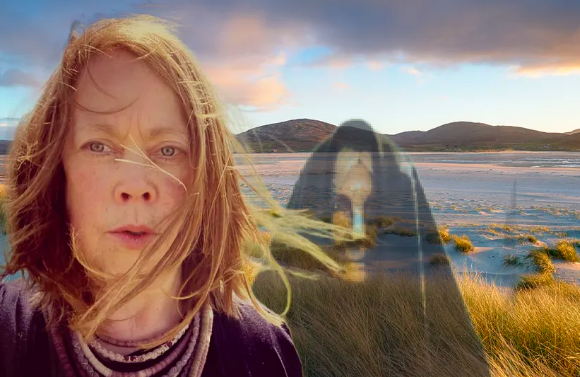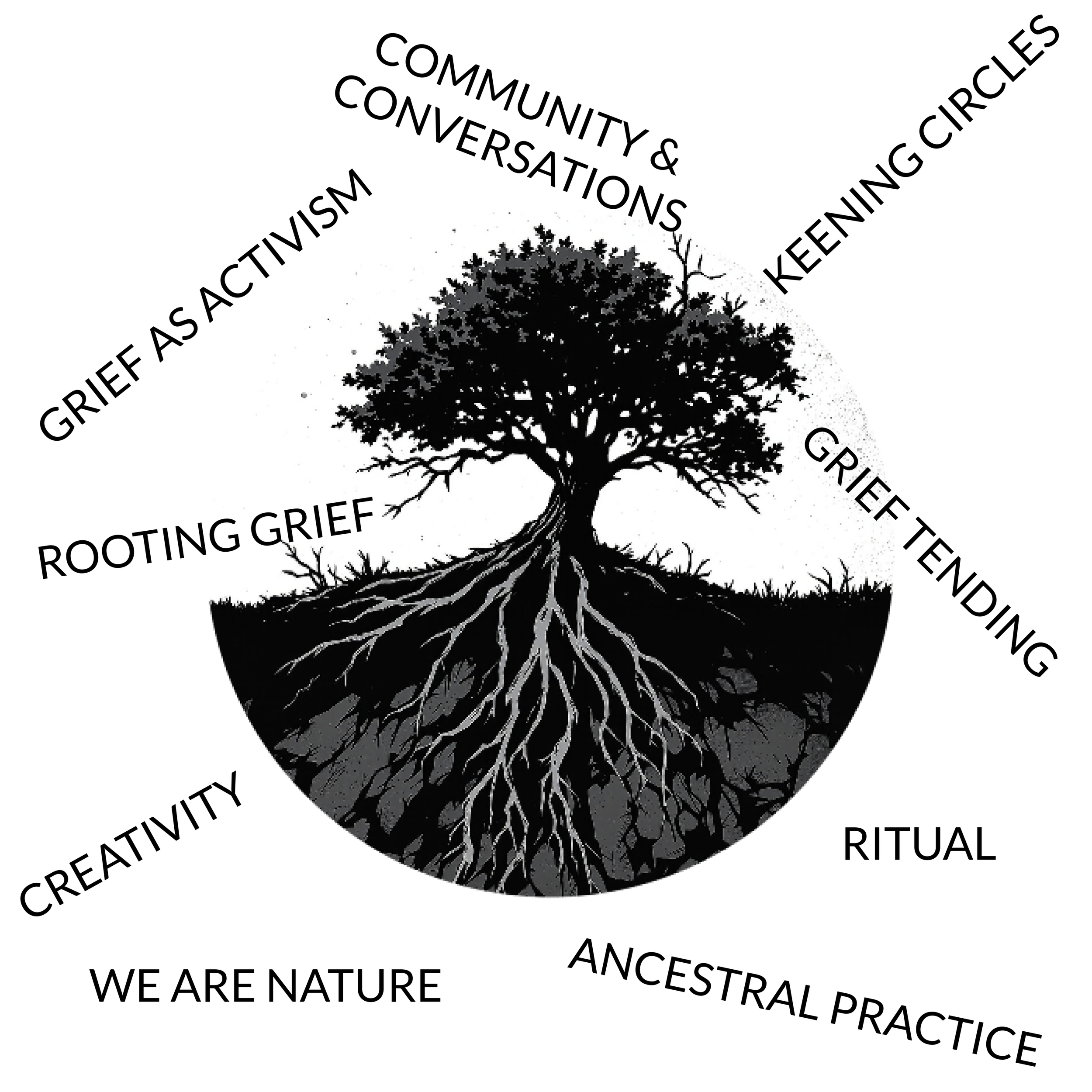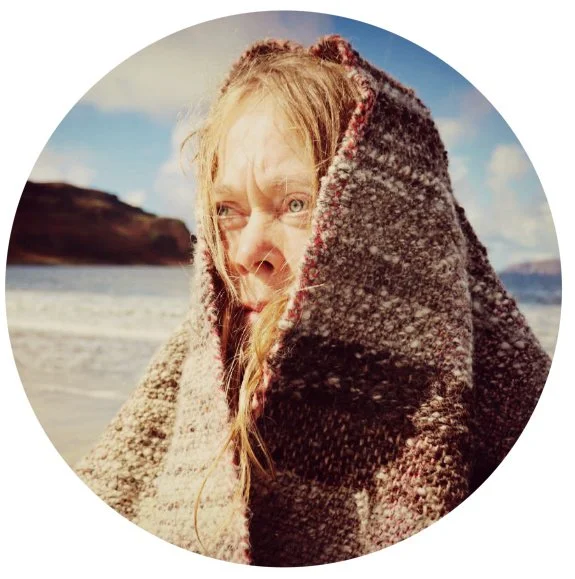Hello, I’m Jude. I live on the West Coast of Scotland, a few miles from Loch Lomond.
My introduction to keening came from a deeply personal request. A dear friend, facing the end of her life due to cancer, asked me out of the blue – would I keen over her body when she dies. That request changed my life.
While I replied yes, I didn’t fully understand what I was agreeing to. Since then, the focus of my work lies in reclaiming the ancient practice of keening, exploring how this ancient grief ritual can help us become both more familiar with grief, as well as allowing us ways of expressing that grief.
Finding Keening
After I performed the keening circle, I went on to read articles about keening and hear some keening songs. I could only imagine how powerful it must have been to be part of the keening ceremony, to see this woman in action – how she spoke about the dead, tapped into her own grief and then the cry of grief which brought all those gathered into expressing their loss.
There are descriptions of her role role, as described by Michelle Collins as one of ‘divine madness’, of her hair loose and flowing, of her barefoot, lost in the flow of her ritual, part of which needed that liminal state as she was also guiding the soul home.
Dark Haired Alan
Yet my journey with keening didn’t finish after the wake of my friend. I had heard a very moving Scottish lament, whose Gaelic translation was Dark Haired Alan, which spoke to my younger brother, both called Allan and with dark hair, who had died aged 36.
I was beginning to see that the invitation of my friend wasn’t just for her, but had drawn something out of me that I would never ordinarily have the belief or confidence to do.
Reclaiming Keening
Reclaiming keening uses the inspiration of this age-old ritual to meet our needs around grief today. In the Wild Edge of Sorrow Francis Weller describes that we live in a grief-phobic and death-denying culture, no longer possessing the tools to grieve with, death is swiftly swept up and processed behind doors by the industrial funeral industry.
Reclaiming keening offers a space to connect with grief, to let our hands and heart process our feelings through creative projects such as making a keening doll or weaving. Keening circles can provide a curated musical journey which allows for expressions such as anger, frustration or despair. Often these first circles as are awkward and difficult, for often we need to work through lifetimes of cultural conditioning which states grief is something to be experienced alone, and certainly doesn’t encourage expressing grief with others.
After working to get over this cultural conditioning keening circles are more organic, taking elements from the keening woman’s ritual of praising the dead, and openly describing our grief allows us to dive deeper, with shared gestures of ritual to hold the process.
As we deepen our circles, we often experience liminal phases, this is often where a spark of healing beginning, and continues to work with use long after the circle finishes.
“The taproot of some trees remains even after the top has been shaved off by sheep. We’ve got to make for modern times new growth that’s rooted in ancient spiritual bedrock’ ”
Ancient Spiritual Bedrock
Keening is rooted in an Ancient Spiritual Bedrock, it’s an age-old tradition in the lands of both Scotland and Ireland. Keening is more than just the crying and lamenting part and is part of a larger ritual. It is rooted in the land, for me - rooted in the land of the Ancestral Mothers of Scotland, my own spiritual foundation. Working with the inspiration of keening is also tapping into the land, a sense of belonging, the stories, history and folklore of a place, the environmental and social issues of place and considering the future life. It’s about imagination and creativity, a communication with place and exploring being inspired by these old traditions.
A Grief tending Practice
Reclaiming keening is a practice which extends past the keening circles, as it’s rooted in a grief tending practice, which lies at the intersection of:
Grief as activism
Community & conversations
Remembering we are nature
An ancestral practice
Creativity & ritual
As an artist, creativity and ritual lie at the heart of my practice. Finding the words to speak about our grief can be difficult, it’s not a language we know well. Creativity lets us express what words cannot, and often moves way beyond words. This is how creativity becomes a ritual, guided by the soul, a language we are all fluent in, and sometimes it only takes a gentle reminding to find our way back to it.
My background is in Human Ecology, I gained my M.S.c in Human Ecology with the Centre for Human Ecology, in partnership with Glasgow’s Strathclyde University - my thesis was study of the Goddess Brighid as a Goddess Archetype and her Relevance to Cultural Activists in Contemporary Scotland.




